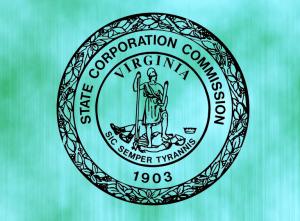Rate Case Roundup: Virginia

In a water rate docket that echoed one in New York, the Virginia State Corporation Commission authorized Virginia-American Water Company (VAWC) to increase its revenues by approximately $5.2 million, a reduction of $3.5 million from the $8.7 million proposed by the utility. The utility not only asked for the same dollar amount of rate relief in the two states, but also the same ROE of 10.75%.
However, the Virginia commission was as unimpressed by the 10.75% ROE proposal as had been the New York commission. Nevertheless, VAWC succeeded in securing a somewhat higher authorized ROE in Virginia than had NYAW in New York. The Virginia ROE, which was fully litigated and not subject to stipulation, was set at 9.25%, slightly above the 9.1% ROE approved in New York.
The Virginia commission explicitly rejected the company's suggested ROE adders for size, leverage, and flotation costs, stating that VAWC is not that small when compared to many water utilities and that it does not issue stock of its own. Moreover, alluding to the financial strength of VAWC's parent company, the commission deemed the utility to not face as much business risk as other stand-alone water utilities. The commission averred that a 9.25% ROE was in line with the state of the local economy as well as current market conditions.
Turning to rate design, the commission agreed with the utility's plan to move toward single tariff pricing for all of its service divisions. It therefore approved a common monthly customer charge of $15 for customers in VAWC's Alexandria, Hopewell, and Prince William districts. The commission further allowed VAWC to commence a three-year pilot adding a water and wastewater infrastructure improvement surcharge to customers located in the company's Alexandria district, subject to a cap of 7.5%.
At the same time, though, the commission denied VAWC authority to implement either a revenue stability mechanism (RSM) or a declining usage adjustment (DUA). In the commission's view, both the RSM and the DUA had been devised with an eye toward guaranteeing the utility a certain amount of revenue regardless of changes in customer consumption. But that, the commission said, would discourage conservation because customers would no longer see any billing benefit from lower usage.
The commission also voiced skepticism as to the significant long-term declines in consumption reported by the company. The commission pointed out that in providing usage data to the commission, VAWC had conveniently left out certain figures showing an increase in consumption during various weather events in 2014.
The commission held that such cherrypicking of data would not be tolerated, and it warned the utility that rate schedules based on manipulated data clearly undercut its claims that there has been, and probably always will be now, steady reductions in water consumption. The commission maintained that the utility's act in removing an unfavorable actual number and replacing it with an artificial number rendered the company's calculations "naturally suspect," and clearly militated against adoption of either the RSM or DUA proposals. Re Virginia-American Water Co., Case No. PUE-2015-00097, May 24, 2017 (Va.S.C.C.).

